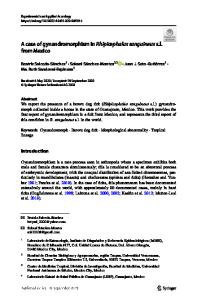Effect of egg clustering on the fitness of Rhipicephalus sanguineus larvae
- PDF / 143,186 Bytes
- 3 Pages / 595.276 x 790.866 pts Page_size
- 90 Downloads / 299 Views
SHORT COMMUNICATION
Effect of egg clustering on the fitness of Rhipicephalus sanguineus larvae Rafael Antonio Nascimento Ramos & Alessio Giannelli & Filipe Dantas-Torres & Domenico Otranto
Received: 22 November 2012 / Accepted: 28 November 2012 / Published online: 20 December 2012 # Springer-Verlag Berlin Heidelberg 2012
Abstract Several biological aspects of Rhipicephalus sanguineus have been studied, but scant information is available on the effect of egg clustering on incubation period and larval survival. Herein, R. sanguineus eggs were separated in groups composed by 1 (GI), 10 (GII), 50 (GIII), 100 (GIV), 500 (GV) and 1,000 (GVI) eggs (10 replicates), and incubation and larval survival period were recorded. No correlation was observed between the amount of egg batches and hatching percentage. Larvae from GI hatched in a longer time (mean 17 days), than those of other groups (mean 14.9 days). This difference was significant in eggs from group GI vs. GV and GI vs. GVI (P
Data Loading...











